The global aircraft electrical systems marketis expected to grow from USD 19.27 billion in 2019 to USD 32.61 billion by 2027, at a CAGR of 6.80% during the forecast period 2020-2027.
The electrical system plays an essential role in the aircraft. It is an independent network of components that store, utilize, distribute, and generate electrical energy. The capacity and complexity of the electrical system differ widely from single-engine aircraft to modern multi-engine aircraft. The components of an electrical system are the same in both types of engines. Aircraft electrical system generates electricity with the help of alternators or generators depending upon the type of aircraft. It can be powered by Ram Air Turbine or an auxiliary power unit as well as by the engine. The aircraft electrical system consists of 28-volt or a 14-volt direct current.
This study delivers a comprehensive analysis of components, platforms, and regions.The component segment includesbattery management systems, distribution devices, conversion devices, and generators.Generators segment held the highest share in the aircraft electrical systems market in 2019. It plays an essential role in the systems as it acts as a primary source of electrical power. It is mainly installed in light aircraft as the generators are used to convert energy from mechanical into electrical. It is also driven by a belt arrangement in the engine. Generators installed in the aircraft utilizes battery power at low engine RPM.The platform segment includes business & general aviation, military aviation, and commercial aviation.The commercial aviation segment held the highest share in the aircraft electrical systems market in 2019. The factor, such as the increased disposable income of the middle-class population, which results in a rise in the number of air travel, is contributing to the growth of the commercial aviation segment.
The market has been divided into North America, Europe, Asia-Pacific, Middle East & Africa, and South America.North America is expected to show the largest share in the aircraft electrical systems over the forecast period. Factors such as a rise in the utility of the aircraft in commercial applications in order to carry out surveillance activities and transport are contributing to the growth of the market in the North American region. Also, rise in the demand for fuel-efficient aircraft as well as increased investments in the research and development activities are driving the growth of the market.
Some of the notable players in the global aircraft electrical systems market areThales Group, T.E Connectivity, Boeing, Eaton, Zenith Aircraft, Flame Enterprises Incorporated, UTC Aerospace System, Zodiac Aerospace, Aircraft Spruce, Safran Electrical and Power, Astronics Corporation and Esterline Control Systems. In November 2018, the contract was made between Honeywell and US Air Force. The contract was done in order to offer ground-based auxiliary power systems and logistics support for multiple aircraft types and secondary power systems, respectively. In 2017, Astronics launched CorePower systems, which can be controlled intelligently. It replaced thermal mechanical-breaker systems, which further results in influencing the electrical systems.
This study forecasts revenue growth at global, regional, and country levels from 2020 to 2027. Fior Markets has segmented the market based on below-mentioned segments:
Global Aircraft Electrical Systems Market Analysis And Forecast, By Component
Global Aircraft Electrical Systems Market Analysis And Forecast, By Platform
Global Aircraft Electrical Systems Market Analysis And Forecast, By Regional Analysis
Report Description:
1. Introduction
1.1. Objectives of the Study
1.2. Market Definition
1.3. Research Scope
1.4. Currency
1.5. Key Target Audience
2. Research Methodology and Assumptions
3. Executive Summary
4. Premium Insights
4.1. Porter’s Five Forces Analysis
4.2. Value Chain Analysis
4.3. Top Investment Pockets
4.3.1. Market Attractiveness Analysis By Component
4.3.2. Market Attractiveness Analysis By Platform
4.3.3. Market Attractiveness Analysis By Region
4.4. Industry Trends
5. Market Dynamics
5.1. Market Evaluation
5.2. Drivers
5.2.1. Optimized aircraft performance using more electric technology
5.3. Opportunities
5.3.1. Technological advancements in aircraft electrical systems
5.4. Challenges
5.4.1. Power density and efficiency due to the miniaturization of power conversion equipment
6. Global Aircraft Electrical Systems Market Analysis and Forecast, By Component
6.1. Segment Overview
6.2. Battery Management Systems
6.3. Distribution Devices
6.4. Conversion Devices
6.5. Generators
7. Global Aircraft Electrical Systems Market Analysis and Forecast, By Platform
7.1. Segment Overview
7.2. Business & General Aviation
7.3. Military Aviation
7.4. Commercial Aviation
8. Global Aircraft Electrical Systems Market Analysis and Forecast, By Regional Analysis
8.1. Segment Overview
8.2. North America
8.2.1. U.S.
8.2.2. Canada
8.2.3. Mexico
8.3. Europe
8.3.1. Germany
8.3.2. France
8.3.3. U.K.
8.3.4. Italy
8.3.5. Spain
8.4. Asia-Pacific
8.4.1. Japan
8.4.2. China
8.4.3. India
8.5. South America
8.5.1. Brazil
8.6. Middle East and Africa
8.6.1. UAE
8.6.2. South Africa
9. Global Aircraft Electrical Systems Market-Competitive Landscape
9.1. Overview
9.2. Market Share of Key Players in Global Aircraft Electrical Systems Market
9.2.1. Global Company Market Share
9.2.2. North America Company Market Share
9.2.3. Europe Company Market Share
9.2.4. APAC Company Market Share
9.3. Competitive Situations and Trends
9.3.1. Platform Launches and Developments
9.3.2. Partnerships, Collaborations, and Agreements
9.3.3. Mergers & Acquisitions
9.3.4. Expansions
10. Company Profiles
10.1. Thales Group
10.1.1. Business Overview
10.1.2. Company Snapshot
10.1.3. Company Market Share Analysis
10.1.4. Company Component Portfolio
10.1.5. Recent Developments
10.1.6. SWOT Analysis
10.2. T.E Connectivity
10.2.1. Business Overview
10.2.2. Company Snapshot
10.2.3. Company Market Share Analysis
10.2.4. Company Component Portfolio
10.2.5. Recent Developments
10.2.6. SWOT Analysis
10.3. Boeing
10.3.1. Business Overview
10.3.2. Company Snapshot
10.3.3. Company Market Share Analysis
10.3.4. Company Component Portfolio
10.3.5. Recent Developments
10.3.6. SWOT Analysis
10.4. Eaton
10.4.1. Business Overview
10.4.2. Company Snapshot
10.4.3. Company Market Share Analysis
10.4.4. Company Component Portfolio
10.4.5. Recent Developments
10.4.6. SWOT Analysis
10.5. Zenith Aircraft
10.5.1. Business Overview
10.5.2. Company Snapshot
10.5.3. Company Market Share Analysis
10.5.4. Company Component Portfolio
10.5.5. Recent Developments
10.5.6. SWOT Analysis
10.6. Flame Enterprises Incorporated
10.6.1. Business Overview
10.6.2. Company Snapshot
10.6.3. Company Market Share Analysis
10.6.4. Company Component Portfolio
10.6.5. Recent Developments
10.6.6. SWOT Analysis
10.7. UTC Aerospace System
10.7.1. Business Overview
10.7.2. Company Snapshot
10.7.3. Company Market Share Analysis
10.7.4. Company Component Portfolio
10.7.5. Recent Developments
10.7.6. SWOT Analysis
10.8. Zodiac Aerospace
10.8.1. Business Overview
10.8.2. Company Snapshot
10.8.3. Company Market Share Analysis
10.8.4. Company Component Portfolio
10.8.5. Recent Developments
10.8.6. SWOT Analysis
10.9. Aircraft Spruce
10.9.1. Business Overview
10.9.2. Company Snapshot
10.9.3. Company Market Share Analysis
10.9.4. Company Component Portfolio
10.9.5. Recent Developments
10.9.6. SWOT Analysis
10.10. Safran Electrical and Power
10.10.1. Business Overview
10.10.2. Company Snapshot
10.10.3. Company Market Share Analysis
10.10.4. Company Component Portfolio
10.10.5. Recent Developments
10.10.6. SWOT Analysis
10.11. Astronics Corporation
10.11.1. Business Overview
10.11.2. Company Snapshot
10.11.3. Company Market Share Analysis
10.11.4. Company Component Portfolio
10.11.5. Recent Developments
10.11.6. SWOT Analysis
10.12. Esterline Control Systems
10.12.1. Business Overview
10.12.2. Company Snapshot
10.12.3. Company Market Share Analysis
10.12.4. Company Component Portfolio
10.12.5. Recent Developments
10.12.6. SWOT Analysis
List of Table
1. Global Aircraft Electrical Systems Market, By Component, 2017-2027 (USD Billion) (K Units)
2. GlobalBattery Management Systems, Aircraft Electrical Systems Market, By Region, 2017-2027 (USD Billion) (K Units)
3. Global Distribution Devices, Aircraft Electrical Systems Market, By Region, 2017-2027 (USD Billion) (K Units)
4. Global Conversion Devices, Aircraft Electrical Systems Market, By Region, 2017-2027 (USD Billion) (K Units)
5. GlobalGenerators, Aircraft Electrical Systems Market, By Region, 2017-2027 (USD Billion) (K Units)
6. Global Aircraft Electrical Systems Market, ByPlatform, 2017-2027 (USD Billion) (K Units)
7. GlobalBusiness & General Aviation, Aircraft Electrical Systems Market, By Region, 2017-2027 (USD Billion) (K Units)
8. Global Military Aviation, Aircraft Electrical Systems Market, By Region, 2017-2027 (USD Billion) (K Units)
9. Global Commercial Aviation, Aircraft Electrical Systems Market, By Region, 2017-2027 (USD Billion) (K Units)
10. North America Aircraft Electrical Systems Market, By Component, 2017-2027 (USD Billion) (K Units)
11. North America Aircraft Electrical Systems Market, ByPlatform, 2017-2027 (USD Billion) (K Units)
12. U.S. Aircraft Electrical Systems Market, By Component, 2017-2027 (USD Billion) (K Units)
13. U.S. Aircraft Electrical Systems Market, By Platform, 2017-2027 (USD Billion) (K Units)
14. Canada Aircraft Electrical Systems Market, By Component, 2017-2027 (USD Billion) (K Units)
15. Canada Aircraft Electrical Systems Market, By Platform, 2017-2027 (USD Billion) (K Units)
16. Mexico Aircraft Electrical Systems Market, By Component, 2017-2027 (USD Billion) (K Units)
17. Mexico Aircraft Electrical Systems Market, By Platform, 2017-2027 (USD Billion) (K Units)
18. Europe Aircraft Electrical Systems Market, By Component, 2017-2027 (USD Billion) (K Units)
19. Europe Aircraft Electrical Systems Market, By Platform, 2017-2027 (USD Billion) (K Units)
20. Germany Aircraft Electrical Systems Market, By Component, 2017-2027 (USD Billion) (K Units)
21. Germany Aircraft Electrical Systems Market, By Platform, 2017-2027 (USD Billion) (K Units)
22. France Aircraft Electrical Systems Market, By Component, 2017-2027 (USD Billion) (K Units)
23. France Aircraft Electrical Systems Market, By Platform, 2017-2027 (USD Billion) (K Units)
24. U.K. Aircraft Electrical Systems Market, By Component, 2017-2027 (USD Billion) (K Units)
25. U.K. Aircraft Electrical Systems Market, By Platform, 2017-2027 (USD Billion) (K Units)
26. Italy Aircraft Electrical Systems Market, By Component, 2017-2027 (USD Billion) (K Units)
27. Italy Aircraft Electrical Systems Market, By Platform, 2017-2027 (USD Billion) (K Units)
28. Spain Aircraft Electrical Systems Market, By Component, 2017-2027 (USD Billion) (K Units)
29. Spain Aircraft Electrical Systems Market, By Platform, 2017-2027 (USD Billion) (K Units)
30. Asia Pacific Aircraft Electrical Systems Market, By Component, 2017-2027 (USD Billion) (K Units)
31. Asia Pacific Aircraft Electrical Systems Market, By Platform, 2017-2027 (USD Billion) (K Units)
32. Japan Aircraft Electrical Systems Market, By Component, 2017-2027 (USD Billion) (K Units)
33. Japan Aircraft Electrical Systems Market, By Platform, 2017-2027 (USD Billion) (K Units)
34. China Aircraft Electrical Systems Market, By Component, 2017-2027 (USD Billion) (K Units)
35. China Aircraft Electrical Systems Market, By Platform, 2017-2027 (USD Billion) (K Units)
36. India Aircraft Electrical Systems Market, By Component, 2017-2027 (USD Billion) (K Units)
37. India Aircraft Electrical Systems Market, By Platform, 2017-2027 (USD Billion) (K Units)
38. South America Aircraft Electrical Systems Market, By Component, 2017-2027 (USD Billion) (K Units)
39. South America Aircraft Electrical Systems Market, By Platform, 2017-2027 (USD Billion) (K Units)
40. Brazil Aircraft Electrical Systems Market, By Component, 2017-2027 (USD Billion) (K Units)
41. Brazil Aircraft Electrical Systems Market, By Platform, 2017-2027 (USD Billion) (K Units)
42. Middle East and Africa Aircraft Electrical Systems Market, By Component, 2017-2027 (USD Billion) (K Units)
43. Middle East and Africa Aircraft Electrical Systems Market, By Platform, 2017-2027 (USD Billion) (K Units)
44. UAE Aircraft Electrical Systems Market, By Component, 2017-2027 (USD Billion) (K Units)
45. UAE Aircraft Electrical Systems Market, By Platform, 2017-2027 (USD Billion) (K Units)
46. South Africa Aircraft Electrical Systems Market, By Component, 2017-2027 (USD Billion) (K Units)
47. South Africa Aircraft Electrical Systems Market, By Platform, 2017-2027 (USD Billion) (K Units)
List of Figures
1. Global Aircraft Electrical Systems Market Segmentation
2. Global Aircraft Electrical Systems Market: Research Methodology
3. Market Size Estimation Methodology: Bottom-Up Approach
4. Market Size Estimation Methodology: Top-Down Approach
5. Data Triangulation
6. Porter’s Five Forces Analysis
7. Value Chain Analysis
8. Global Aircraft Electrical Systems Market Attractiveness Analysis by Component
9. Global Aircraft Electrical Systems Market Attractiveness Analysis by Platform
10. Global Aircraft Electrical Systems MarketAttractiveness Analysis by Region
11. Global Aircraft Electrical Systems Market: Dynamics
12. Global Aircraft Electrical Systems Market Share by Component(2020 & 2027)
13. Global Aircraft Electrical Systems Market Share by Platform (2020 & 2027)
14. Global Aircraft Electrical Systems Market Share by Regions (2020 & 2027)
15. Global Aircraft Electrical Systems Market Share by Company (2019)
Market research is a method of gathering, assessing and deducing data & information about a particular market. Market research is very crucial in these days. The techniques analyze about how a product/service can be offered to the market to its end-customers, observe the impact of that product/service based on the past customer experiences, and cater their needs and demands. Owing to the successful business ventures, accurate, relevant and thorough information is the base for all the organizations because market research report/study offers specific market related data & information about the industry growth prospects, perspective of the existing customers, and the overall market scenario prevailed in past, ongoing present and developing future. It allows the stakeholders and investors to determine the probability of a business before committing substantial resources to the venture. Market research helps in solving the marketing issues challenges that a business will most likely face.
Market research is valuable because of the following reasons:
Our research report features both the aspects; qualitative and quantitative. Qualitative part provides insights about the market driving forces, potential opportunities, customer’s demands and requirement which in turn help the companies to come up with new strategies in order to survive in the long run competition. The quantitative segment offers the most credible information related to the industry. Based on the data gathering, we use to derive the market size and estimate their future growth prospects on the basis of global, region and country.
Our market research process involves with the four specific stages.

Data Collection: This stage of the market research process involves with the gathering and collecting of the market/industry related data from the sources. There are basically two types of research methods:
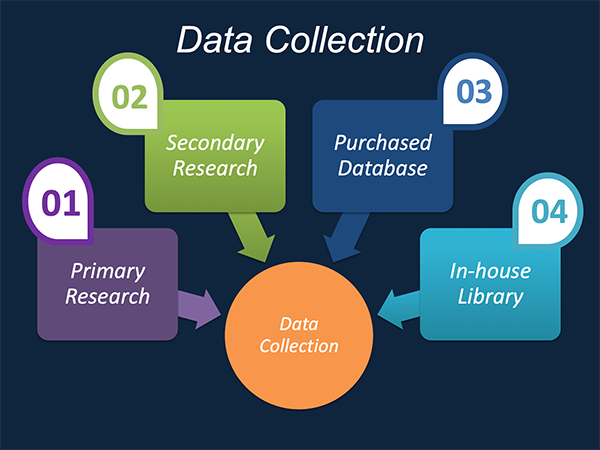
Data Synthesis: This stage includes the evaluation and assessment of all the data acquired from the primary and secondary research. It likewise includes in evaluating the information for any disparity watched while information gathering identified with the market. The data & information is gathered with consideration to the heterogeneity of sources. Scientific and statistical methods are implemented for synthesizing dissimilar information sets and provide the relevant data which is fundamental for formulating strategies. Our organization has broad involvement with information amalgamation where the information goes through different stages:


Market Formulation & Deduction: The last stage includes assigning the data & information in a suitable way in order to derive market size. Analyst reviews and domain based opinions based on holistic approach of market estimation combined with industry investigation additionally features a crucial role in this stage.
This stage includes with the finalization of the market size and numbers that we have gathered from primary and secondary research. With the data & information addition, we ensure that there is no gap in the market information. Market trend analysis is finished by our analysts by utilizing data extrapolation procedures, which give the most ideal figures to the market.
Data Validation: Validation is the most crucial step in the process. Validation & re-validation through scientifically designed technique and process that helps us finalize data-points to be used for final calculations. This stage also involves with the data triangulation process. Data triangulation generally implicates the cross validation and matching the data which has been collected from primary and secondary research methods.





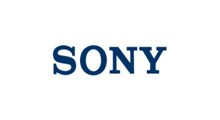

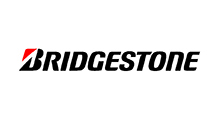

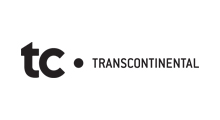















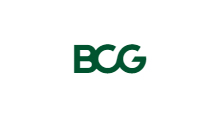




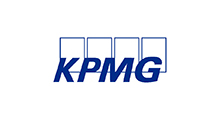
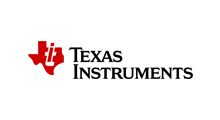



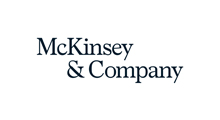

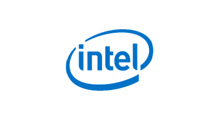







Free Customization
Countries can be added on demand
Free yearly update on purchase of Multi/Corporate User License
Companies served till date

We serve our customers 24x7 for 365 days through calls, emails and live chat options.

Huge database of exceptional market reports bringing market intelligence to your fingertips.

SSL enabled, we offer you various secured payment options for risk free purchase.